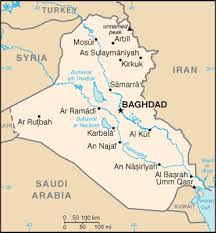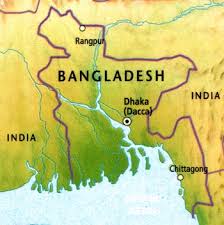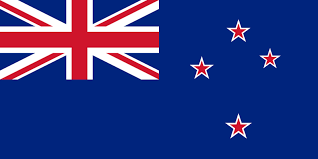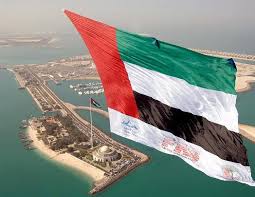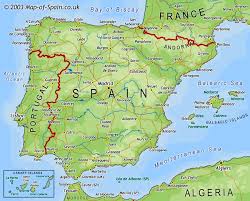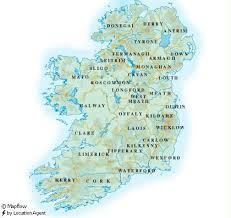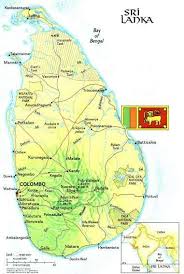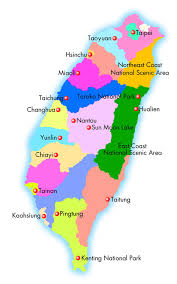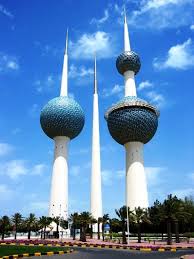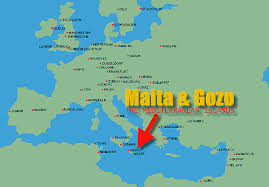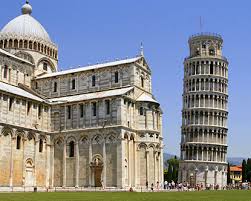- In the United States, training in physical therapy culminates in a doctor of physical therapy (DPT) degree. A few programs still offer a Masters degree. (MSPT, MPT) All US programs are now transitioning to grant the DPT degree nationwide. There are still many physical therapists currently practicing in the US who were trained with a BSPT degree. Physical therapist education includes clinical internships. All states also require physical therapists to pass the National Physical Therapy Examination before they can practice.[20] Each state regulates licenses for physical therapists independently. According to the American Physical Therapy Association, there were 210 accredited physical therapist programs in 2008–of those 15 offered the Master of Physical Therapy, and 195 offered the Doctor of Physical Therapy(DPT) degree. Most programs are in transition to a DPT program.[21]
In the United States, there are approximately 233 accredited two year programs for Physical Therapy Assistants.
- In Iraq, The Physical therapy degree is a master part of orthopaedic surgery board that given by the medical school after the Bs.c degree , so its need full Bs.c degree in medicine ( 6 years )
- In the United Kingdom, university degrees tend to be three rather than four years in length, as British students typically read a two-year A-level course after leaving secondary school at a college of further education before progressing to university level. However, some universities offer a four year part time course, which is open to physiotherapy assistants and technical intructors and involves studying for two days a week and working the remaining three. In order to qualify, students are required to complete 1000 hours of clinically based learning: this typically takes place in the final two years; however, some courses also have clinical placement in the first year. Thirty-five universities and tertiary level institutions train physiotherapists in the UK. The vast majority of physiotherapists work within the National Health Service, the state healthcare system.
- In the Philippines, physical therapy programs are generally 5 years in length and awards the Bachelor of Science in Physical Therapy (BSPT) degree upon graduation. The program consists of basic sciences, 2 years of physical therapy subjects and a final year of internship & research/thesis. Some schools require students to complete a full 12 months of internship. During the internship year, students are required to fulfill clinical affiliations with hospitals, outpatient physical therapy clinics, and other healthcare facilities. Due to the healthcare structure in the Philippines, clinics and therapy departments are often headed by a Physiatrist who performs evaluation and writes out specific treatment orders for the PT to follow, and majority of the treatments are cash-based since not a lot of people have health insurance. To be able to secure a license to practice PT in the Philippines, one must be able to pass a grueling licensure examination (board examination) given by Board of Physical Therapist under the supervision of the Professional Regulation Commission (PRC). Under R.A. 5680, successful examinees will be allowed to include P.T.R.P. in their name which stands for Physical Therapist Registered Philippines. Licensure examination for physical therapists in the Philippines is governed by Republic Act 5680, also known as The Philippine Physical Therapy and Occupational Therapy Law.
- In Turkey, the Physiotherapy (BPT) education is provided by physiotherapy schools in universities (Hacettepe University, Dokuz Eylül University, İstanbulUniversity, Baskent University, Pamukkale University, Dumlupınar University, Süleyman Demirel University) after high school education. Education takes 4 years or 5 years with preb classes. MSc and Ph.D. education is given by institutes of medical sciences.
- In Bangladesh, the Bachelor of Physiotherapy (BPT) course is provided by the Medicine Faculty of University of Dhaka. There are four affiliated institutes, the Bangladesh Health Professions Institute (BHPI)- the Academic Institute of CRP,the National Institute of Traumatology Orthopaedic and Rehabilitation, the state college of Health sciences and the peoples institute of health sciences which provide 5 years of professional education including a one year mandatory internship. Bangladesh Physiotherapy Association (www.bpa-bd.org)is only internationally recognized professional body, working hard to establish the rights and dignity of the professionals in the country.The Bangladesh Physiotherapy Association has received international recognition from WCPT (2007) in Vancouver.
- In Pakistan there are 8 colleges offering Bsc. Physiotherapy and 2 colleges offering Msc in PT. Physiotherapists have a good scope in government and private hospitals and they are awarded 17 grade pay scale and one college Riphah Institute of Physical Therapy and Isra college of physical therapy Hyderabad are offering now DPT (five years duration) and tDPT(two years).In this way Pakistan has become the third country offering DPT in the world.
- In Australia, a few different programs are available at both undergraduate and post graduate level. The physiotherapy degree can be undertaken over a 4 years period as an undergraduate or 2–3 years post graduate with the early components being predominantly theoretical including basic anatomy, biology, physics, psychology, kinesiology, goniometry and physiology. In the latter half of the degree students partake in practical components focusing on musculoskeletal physiotherapy, neuromuscular physiotherapy, paediatric physiotherapy, geriatric physiotherapy, cardiothoracic physiotherapy, and women's health. The program generally progresses with an increasingly clinical focus and usually the final year involves practical placements at clinics, and research. Australian programs offer either the (B.Physio, BSc (Physio), M.Physio, or DPT) degrees.
- In Canada, entry-level physiotherapy education is offered at 13 universities. Some of these university programs are at the Master's level, meaning that applicants must have already completed an undergraduate degree prior to applying; all of them are slated to be at the Master's level by 2010. Many universities also offer graduate programs in physiotherapy, rehabilitation, or related disciplines at the masters or doctoral level. Many physiotherapists may advance their education at these levels in such Clinical Practice Areas as cardiorespirology, geriatrics, neurosciences, orthopaedics, pediatrics, rheumatology, sports physiotherapy, and women's health.
- In New Zealand, there are currently two schools of physiotherapy offering four-year undergraduate programs. Many New Zealand physiotherapists work in the private health care system as musculoskeletal physiotherapists and the curriculum reflects the need to prepare graduates for autonomous practice. Students follow an educational program similar to Australia with an emphasis on biomechanics, kinesiology and exercise. Postgraduate study typically involves three years of subject specific learning.
- In South Africa the degree (B.PhysT, B.Sc Physio or B.Physio) consists of four years of general practice training, involving all aspects of Physiotherapy. Typically, the first year is made up of theoretical introduction. Gradually, time spent in supervised practice increases until the fourth year, in which the student generally spends about 80% in practice. In the fourth year, students are also expected to complete Physiotherapy research projects, which fulfills the requirements of an Honours degree. Professional practice and specialization can only be entered into after a state governed, compulsory year of community service is completed by the student after graduation.
- In the United Arab Emirates the Bachelor Of Physiotherapy (BPT) consists of a 4 year undergraduate degree program. In the first year of the program they are introduced to pre-clinical subjects such as Anatomy, Physiology, Biochemistry, Human Behaviour & Socialisation & Basic Medical Electronics & Computers. The students also get hands on experiences in cadaveric dissections while learning Human Anatomy during the first year of the program. The students progressively are introduced to supervised clinical practice and the integrated curriculum offers the best learning experiences in addition to extensive inhouse elearning programs. The course offers Case Based Learning experiences and focusses on Evidence Based Practices. The program culminates with a six month internship ending with a research project work.
- In Spain a physiotherapy student is required to complete 3 years of training after having passed a university entrance exam. After completing a physiotherapy program, another exam can be taken to work for the public health system of an autonomous community, or a graduate can work for private hospitals, clinics, etc. There are 43 universities with physiotherapy faculties in Spain.
- In the Republic of Ireland, Physiotherapy is available as an undergraduate course in four universities,, Trinity College, University College Dublin, Royal College of Surgeons and University of Limerick. Courses are four years in length with clinical practice in the final two years. Students are required to complete 1000 hours of clinical practice before graduation.
- In India, universities offer undergraduate program of physiotherapy with four years of academic and clinical program and 6 months of compulsory internship. There are over 250 colleges offering undergraduate program in physiotherapy (BPT) and more than 50 colleges offering masters in Physiotherapy (MPT) with 2 years duration. PhD in Physiotherapy is offered in some universities of the states Maharashtra, Karnataka and Tamil Nadu.
- In Sri Lanka, Physiotherapy is available as a Diploma course for 2 years in School of Physiotherapy & Occupational Therapy, which is affiliated to the National Hospital of Colombo from 1957. After the 6 months of classroom training students are sent to hospitals for clinical practice. During the 80's foreign students from Australia, Belgium have studied at the Physiotherapy School. From the year 2005 Medical Faculties of University of Peradeniya & University of Colombo have started the undergraduate course for 4 years.
- In Taiwan, Physical Therapy is available as a four-year undergraduate course in 14 universities. There are also three junior colleges to provide a five-year program. Clinical practice is required in the final year of the both programs mentioned above. Once a student graduates from the PT program, he/she is then required to pass a national licensure exam administered by the Ministry of Examination, Taiwan, R.O.C. Many universities also offer graduate programs in physical therapy, rehabilitation, or related disciplines at the masters or doctoral level.
- In Kuwait, Physical therapy B.Sc degree can be obtained after graduating from Kuwait University (4 years program). Students learn to asses patients and document their progress at their 2nd year and start going to hospitals to have their practical learning from 3rd year. After graduating they can apply to work at hospitals, and they start their job by passing through a training year where they can practice their skills even more. During that year they have to be trained in the following schedule: 2 months general hospital, 2 months orthopedics, 2 months rehabilitation, 2 months neuro, 2 months and half pediatrics, 1 month cardiopulmonary, and 2 weeks of gyna or sport medicine. After that they can chose to be specialized in one of those paths to continue his journey on. Physical therapy in Kuwait is very promising though we lack the availability of post graduation programs unfortunately.
- In Malta, Physical Therapy B.Sc (honours) is available as a course which can be obtained after finishing a four year course at the Institute of Health Care of the University of Malta. This course involves all aspects of Physiotherapy. Students have an intensive 3 year theoretical course after which the s/he spends the last year doing clinical placements (in total = 4 years). Students learn how to assess and treat patients. To be able to secure a license to practice as a physiotherapist, one must be able to pass some practical exams which involves both assessment and treatment. In the fourth year, students are also expected to complete a physiotherapy research project, which fulfills the requirements of an Honours degree.
- In Italy, known as "Laurea in Fisioterapia (abilitante alla professione sanitaria di Fisioterapista)", it is a three-year full time degree taught in the Faculty of Medicine of many Italian Universities. The course is an intensive mix of class time and mandatory internship right from the first year. Internship is such an important part that the number of hours dedicated to practice progressively increases reaching half of the program by the third year. There are no special requirements to be admitted to the Bachelor's degree; students from various backgrounds can access the program, previous passing an 80 question pre selection test. This test is implemented to all those courses known as "numero chiuso" or close access to limit the number of participants. Depending on the Faculty and course between 30 to 400 positions are available each year. To be selected one has not only pass the examination but finish in the top positions required to enter. For all para-medical degrees each Institution can select its own test which it held simultaneously in all Universities, whereas for Medicine the test are administered by the Ministry of Education. Importance is given to the initial exam and a "close number" is paramount. This maneuver controls the job market, hence prodiving secure occupation to those who finish.

